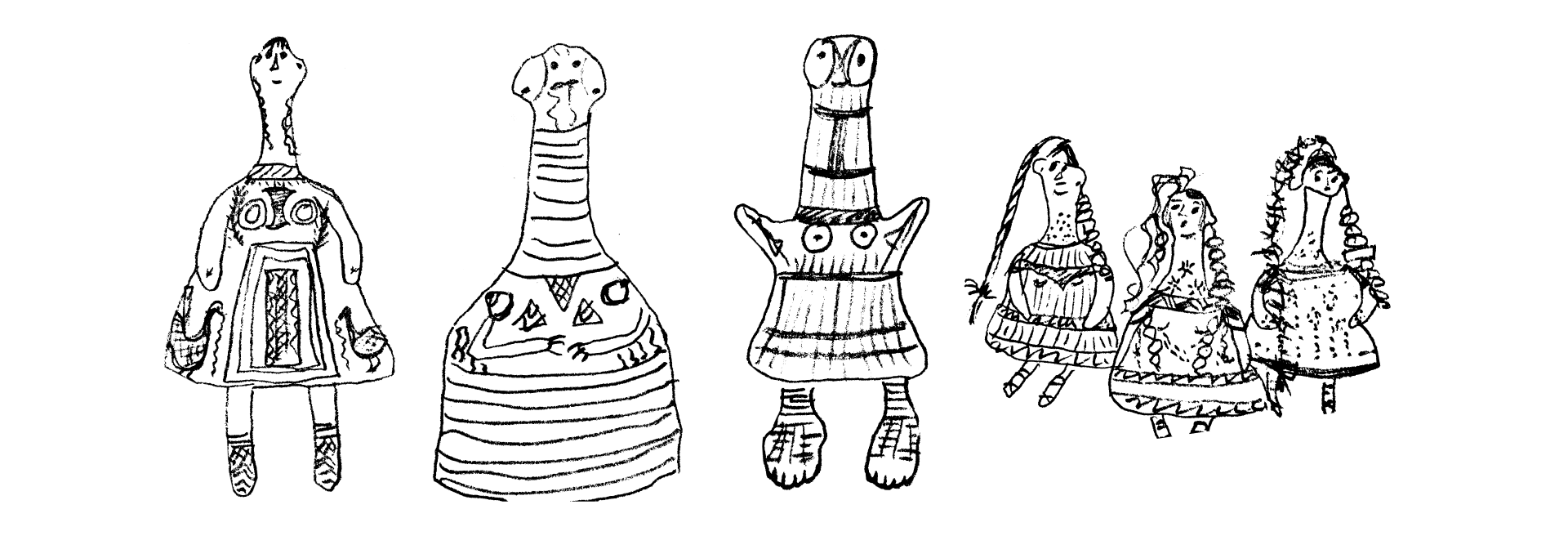
Some Fun Historical Facts About the PLAGGONA, the Ancient Greek Doll
The plaggona (πλαγγόνα) was originally a religious idol. Some of the earliest plaggones (πλαγγόνες in plural) date back to 7th century BC. They were initially made out of clay, but other materials were also used, such as wax, ivory or wood and they had a female form. Their clothes were usually painted on, but sometimes, girls sewed little fabric outfits for their dolls. They had painted faces and intricate hair made out of plaited string and beaded earrings. They were often accompanied by small items, such as vases, tables etc. The first dolls were immobile, but, gradually, as they evolved, they had moving legs, and then arms, too. Their limbs were often moved by attaching wires to them – like modern day marionettes – and they were called nevrospasta (νευρόσπαστα). The movable arms and legs were attached to the main body of the doll with string. Plaggones were made in ceramics studios, originally by hand, but later on, by 500BC, they used moulds. The role of the plaggona was twofold. On the one hand, it was a toy, meant to generate happiness and entertainment, but they were also used as a tool to educate and prepare young girls for their future duties as women and mothers, a small introduction to what they could expect when they grew older. Girls were very attached to their dolls. Of course, the role of women in society has changed since then, but back in antiquity, this preparation was of vital importance. If a girl died before she was married, her plaggona was buried with her. Prior to her wedding day, she had to sacrifice her doll to the goddess Artemis.

My Twist on the Plaggona
My inspiration for these dolls came from two different areas. Firstly, I have always loved dolls and, as a child, I had a huge collection of them, and secondly, some years back, during a ceramics class, I made a doll of the artist Frida Kahlo, a woman who has inspired me greatly. I loved making her so much, that this ignited a spark to devote more time to plaggones. Basing this idea on my love of making things with my hands and also of showing how the roles of women have changed, I decided to use traditional techniques to produce contemporary historical figures of famous women in history, as well as themed or seasonal dolls, and characters from mythology and fantasy, for example, Christmas angels, mermaids and goddesses.
Materials Used
I got intrigued by the idea of making my dolls out of a lighter and less fragile material than clay, and this led me to papier-mâché. The dolls are composed of mixed media and, where appropriate, crystals, wood, gold leaf, silk threads and wire are used. Each plaggona has an item with her – for example, a paintbrush for an artist, a book for a writer – to mirror the original ancient dolls, one that’s relevant to the actual historical figure or specific theme.
Quotes and Blessings
In addition to possessing this one item, each plaggona also has a blessing or quote inside her dress. The thought behind that was, even though they are handmade out of paper and, technically, inanimate, these little dolls will always deliver an uplifting message and, thus, have their own voice.
My Aim
These figurines are works of art – not meant to be used as toys as they were in ancient times. They are a twist on ancient Greek dolls with a humorous touch and with great attention to details, which make them come to life. No two will ever be the same. Through their whimsical, unique and entertaining nature, it is my desire that each plaggona will bring joy to every home it inhabits.
Orders and prices upon request
All ideas and designs are Copyright © 2019 by Annia Lekka | Sketches of original dolls are Copyright © 2019 by Annia Lekka
Copyrights © 2020 Annia Lekka. All Rights Reserved


